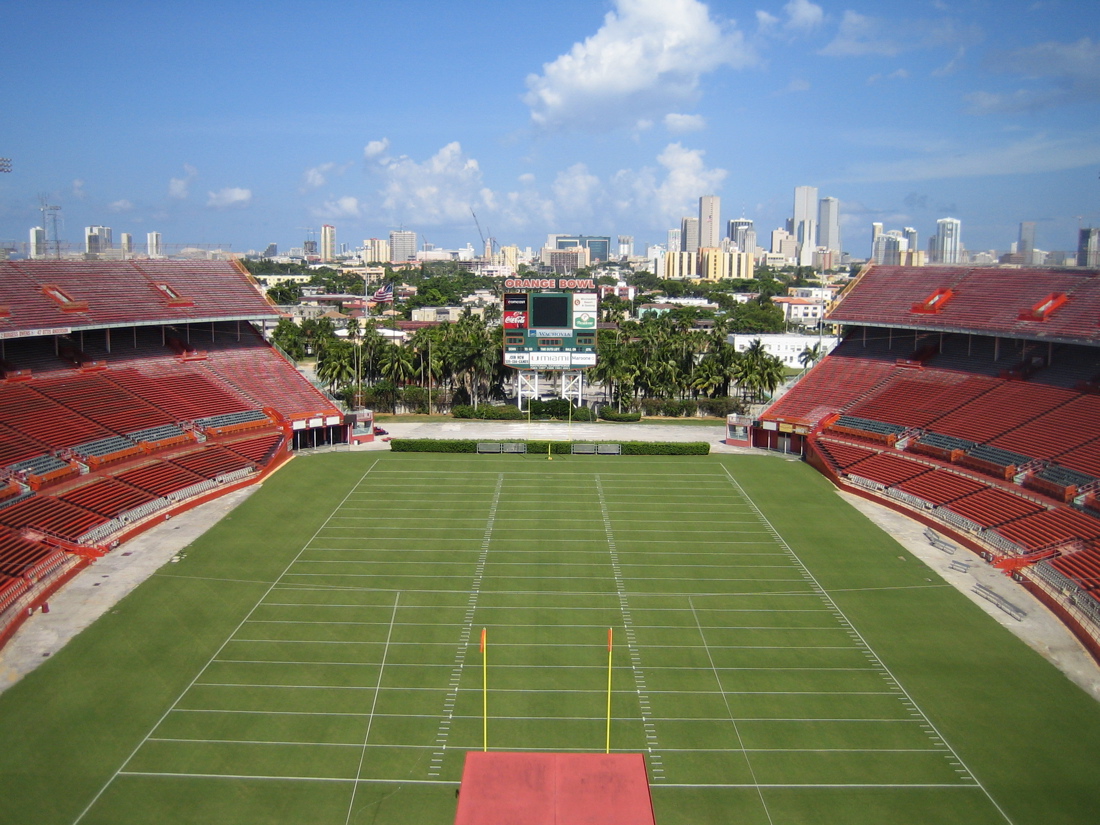
Brazilian forward Bebeto in action against Ghana during the 1996 Olympic soccer tournament in the Orange Bowl
American football has always been the main attraction at the Orange Bowl. But the sport the rest of the world calls football also has a long history at the stadium. While the City of Atlanta hosted the Olympic games in 1996, the Orange Bowl was one of five stadiums from around the country to host Olympic soccer matches.
The tournament included teams from 16 countries divided into four groups. Miami and Orlando hosted first round games for Groups B and D. Fans from Brazil, Japan, Hungary, Nigeria, France, Australia, Ghana and Saudi Arabia would fill the Orange Bowl with their colorful flags, serenading the players with chants and songs that echoed across Little Havana. But the team everyone wanted to see was Brazil.
In the legendary history of the Brazilian national team, they've won just about every major tournament in the world. Brazil has won 5 World Cup titles, more than any nation on the planet. But for all its success and dominance, the Brazilians have yet to capture an Olympic gold medal. It wasn't from a lack of trying. In 1996, Brazil sent a team to the Olympics filled with some of the most talented and famous players to ever play the sport. The roster was filled with names like Ronaldo, Bebeto, Rivaldo and Juninho. These players were so world-renowned, they only needed one name to be recognized.
But it didn't take long for the Olympic curse to rear its ugly head on Brazil. In its first match, Brazil faced heavy underdog Japan. A crowd of 46,713, mostly carrying Brazilian flags, gathered at the Orange Bowl. But in the 72nd minute of the match, Japan scored the game's only goal. It was a stunning defeat. Brazil would rebound and win its next two matches against Hungary and Nigeria. The match against Nigeria drew the largest crowd of the tournament--55,650.
But attendance at the Orange Bowl was mostly disappointing. If Brazil wasn't playing, the fans weren't coming. One match between France and Saudi Arabia drew just 4,615 fans. Another match between Australia and Saudi Arabia atracted only 5,997 spectators. Of the teams that competed in Miami, Brazil and Nigeria advanced to the medal round. Despite beating Nigeria in the tournament's first round, the Nigerians got revenge when it counted and beat Brazil 4-3 in Athens, Georgia. Nigeria won the gold medal, while Argentina took the silver and Brazil had to settle with a disappointing bronze.
Beyond the 1996 Olympics, soccer has a rich history in the Orange Bowl Stadium. During the 1970s, it was the home field for the Miami Toros of the North American Soccer League. Over the years, it's been the site several FIFA tournaments including the CONCAF Gold Cup which featured the best teams in the Western Hemisphere. National teams from Brazil, Argentina, Colombia and the United States have used the stadium for World Cup qualifying matches. The Haitian national team once used the Orange Bowl as its home field due to political unrest in its country. One of the most famous soccer matches played at the Orange Bowl took place May 29, 1994 when the Colombian National Team beat Italian club soccer power A.C. Milan 2-1 in front of 57,724 fans. It is still the largest crowd to watch a soccer match in Florida.

I brought my son's soccer team to the Brazil-Nigeria match. The atmosphere in the stadium was electrifing -- it may be the most exciting game, of any sport, I've attended.
ReplyDeleteWell it's kind of obvious that teams like Brazil, Argentina and Germany have more fans around the world than any other team. They are capable of get the stadiums to the full capacity. Only teams with such a power can do that, as well as guy can do it with some help of viagra online .
ReplyDelete